Partial Hospitalization Program vs. IOP
Written and medically reviewed by the clinical team at Continuum Outpatient Center, including licensed therapists, addiction specialists, and medical professionals.
Partial Hospitalization Program vs. IOP: Fundamental Differences
When it comes to treating mental health disorders and addiction, there are different levels of care. Two of the most common are partial hospitalization programs (PHP) and intensive outpatient programs (IOP).
While both are outpatient programs, there are fundamental differences between the two. Here’s a breakdown of the partial hospitalization program vs. IOP debate:

Partial Hospitalization Program vs. IOP: Structure
- Group therapy sessions
- Individual counseling
- Medication management
Partial Hospitalization Program vs. IOP: Level of Intensity
Partial Hospitalization Program vs. IOP: Treatment Setting
Partial Hospitalization Program vs. IOP: Cost Differences
Partial Hospitalization Program vs. IOP: Focus of Treatment
Partial Hospitalization Program vs. IOP: Duration of Treatment
Mental Health Conditions Addressed in a Partial Hospitalization Program
- Depression
- Anxiety disorders
- Post-traumatic stress disorder (PTSD)
- Bipolar disorder
- Substance use disorders
- Eating disorders
- Personality disorders
- Schizophrenia
Mental Health Conditions Addressed in an IOP
- Mild to moderate depression
- Anxiety disorders
- Substance use disorders
- Eating disorders
Partial Hospitalization Program vs. IOP: Admission Criteria and Suitability
Admission Criteria for PHP
The admission criteria for a PHP are often more stringent than those for an IOP. People who need a higher level of care due to severe addiction or co-occurring mental health disorders may be better suited for a PHP.
- Medical necessity: A PHP is designed for those who are at risk of medical complications due to substance use. They may need regular medical supervision, medication management, or specialized treatments.
- Suitability: A PHP may be recommended for those who have unsuccessfully completed previous outpatient treatment or have experienced repeated relapses.
- Safety concerns: If people are at risk of harm to themselves or others, a PHP can provide a structured and safe environment to address these concerns.
Factors Determining Suitability for PHP
- Medical stability: If a person’s medical condition needs closer monitoring, a PHP is a more suitable option
- Availability of support system: If someone lacks a reliable environment outside of treatment, a PHP can offer a temporary living option that promotes accountability and sobriety.
Admission Criteria for IOP
- Stable medical condition: People seeking IOP care should have a stable medical condition that does not need intensive care.
- Lower addiction severity: An IOP may be suitable for those with a lower level of addiction severity. This includes those who have completed a higher level of care, such as residential treatment or a PHP.
- Commitment to sobriety: People entering an IOP should demonstrate a commitment to recovery. They should be motivated to actively take part in treatment while maintaining a drug-free lifestyle.
Factors Determining Suitability for IOP
- Supportive living environment: If someone has a supportive living environment, an IOP may be a more suitable choice. This environment should have minimal triggers and access to substance-free resources.
- Work or family obligations: Those who have work or family responsibilities that cannot be put on hold may find anIOP more flexible in terms of scheduling and time commitment.
- Progress from intensive treatment: If someone has successfully completed a higher level of care, such as a PHP or residential treatment, transitioning to an IOP can provide continued support as they work toward maintaining their sobriety.
Partial Hospitalization Program vs. IOP: Structure and Intensity
Partial Hospitalization Program Structure and Intensity
Morning Session
Afternoon Session
- Art therapy
- Recreational therapy
- Mindfulness exercises
- Psychoeducation workshops
Intensive Outpatient Program (IOP) Structure and Intensity
Flexible Time Slots
Therapy and Counseling Sessions
- Addressing specific issues
- Developing coping skills
- Building a support network
Partial Hospitalization Program vs. IOP: Potential Limitations
Limitations of Partial Hospitalization Programs
- Limited supervision: Partial hospitalization programs do not provide 24/7 supervision. This means that patients may not be able to access care during a crisis or emergency.
- Short treatment duration: A PHP often lasts for a shorter period than inpatient treatment programs. This means that patients may not receive the same level of care as they would in an inpatient program.
- Lack of privacy: Partial hospitalization programs may require patients to take part in group therapy sessions. This can be uncomfortable for those who prefer more privacy.
Limitations of Intensive Outpatient Programs
- Limited structure: Compared to a PHP or inpatient care, an IOP often offers less structure and supervision. This may be challenging for people who need a highly structured environment to manage their mental health or substance use issues.
- Potential for relapse: Relapse rates for substance use disorders can reach 60%. An IOP may involve people returning to living environments or communities that have triggers for relapse. This requires patients to develop strong coping mechanisms and support systems to maintain their recovery.
Partial Hospitalization Program vs. IOP: Therapeutic Interventions and Modalities
Cognitive Behavioral Therapy (CBT)
Dialectical Behavioral Therapy (DBT)
- Regulate emotions
- Build better relationships
- Promote self-acceptance
Experiential Therapy
Eye Movement Desensitization and Reprocessing (EMDR)
EMDR is a specialized therapy for trauma-related disorders. It uses eye movements or other techniques to help process distressing memories. In both programs, EMDR helps process trauma and reduce distress.
Meditation
Meditation, including mindfulness, is used in PHP and IOP settings. It involves focusing on the present without judgment.
- Reduce stress
- Manage anxiety and depression
- Improve emotional well-being
Psychoeducational Groups
Harm Reduction Techniques
- Safer drug use practices
- Needle exchange programs
- Overdose prevention education
- Provision of naloxone
Partial Hospitalization Program vs. IOP: Levels of Medical and Psychiatric Support
Medical Support in Partial Hospitalization Program
- Psychiatric assessment
- Medication management
- Case management
- Access to counseling
Psychiatric Support in Partial Hospitalization Programs
- Coping methods
- Social skills
- Emotional regulation tactics
Medical Support in Intensive Outpatient Program
Psychiatric Support in Intensive Outpatient Program
- Emotional support
- Education
- Coping mechanisms
Partial Hospitalization Program vs. IOP: Treatment Options Available to Participants
- Behavioral therapy
- Medication management
- Life skills training
- Vocational training
- Art therapy
Partial Hospitalization Program vs. IOP: Incorporating Family Involvement and Support
Importance of Family Involvement in PHP and IOP Care
Educating and Helping Families
Support Groups for Families
Family Therapy Sessions
Creating a Supportive Home
- Remove substances and triggers
- Establish routines
- Promote healthy habits
Encouragement and Motivation

Partial Hospitalization Program vs. IOP: How Can Continuum Outpatient Center Help?
If you or someone you know are contemplating a partial hospitalization program vs. IOP care, we are here to help.
Continuum Outpatient Center provides effective treatment options for those struggling with mental health and substance use disorders. Our comprehensive approach focuses on personalized care and support, ensuring that each client receives the treatment they need to achieve lasting recovery.
With a range of services, including both PHP and IOP options, Continuum Outpatient Center is dedicated to helping people regain control of their lives.
Tailored Treatment Plans
Multidisciplinary Approach
Support and Aftercare Services
Discover Hope and Healing at Continuum Outpatient Center
Don’t let addiction control your life. Take the first step toward recovery at Continuum Outpatient Center. Reach out to us to explore the differences between our effective partial hospitalization program vs. IOP program, and reclaim your future today.
Resources
- https://www.verywellmind.com/what-is-an-iop-intensive-outpatient-program-5521766
- https://www.sciencedirect.com/topics/nursing-and-health-professions/partial-hospitalization
- https://nida.nih.gov/publications/drugs-brains-behavior-science-addiction/treatment-recovery
- https://www.ncbi.nlm.nih.gov/pmc/articles/PMC2897895/
- https://store.samhsa.gov/sites/default/files/SAMHSA_Digital_Download/pep20-02-02-016.pdf


